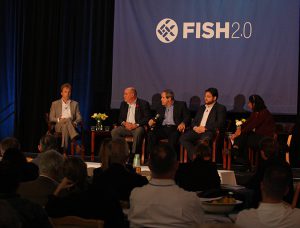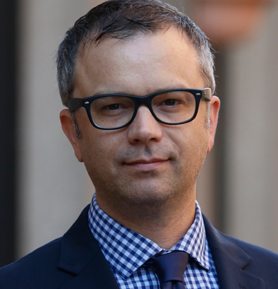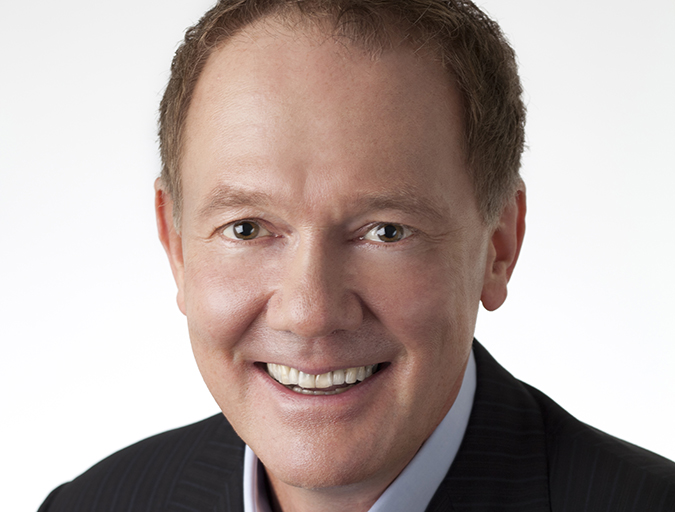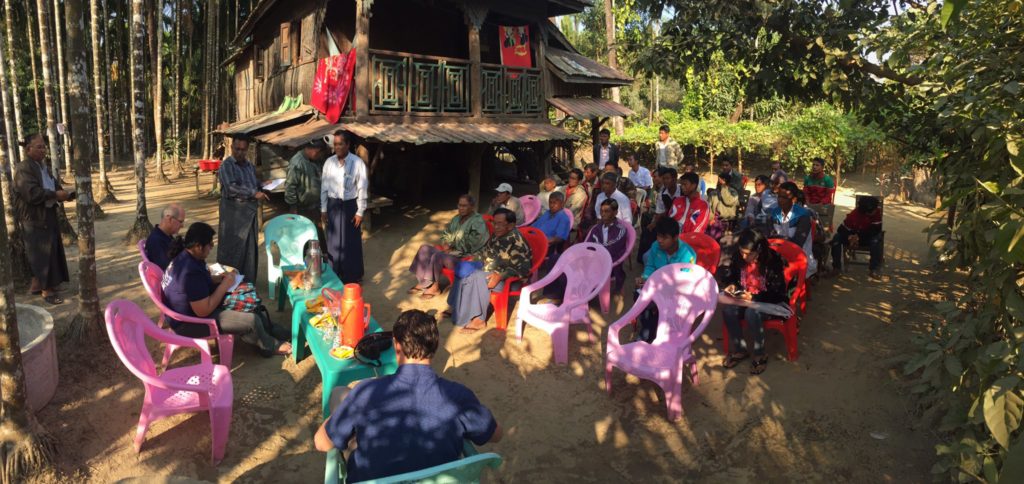Investment competition founder talks innovation, competition and the financing aquaculture seeks for the future

If you sell, you’ve probably practiced your elevator pitch, that condensed, to-the-point message that sums up the most essential information about you, your business or the product or service you offer.
Perhaps you’ve polished this pitch in front of family or friends – or only a mirror – but delivering a succinct speech on stage, before hundreds of fellow professionals, with your career potentially on the line, is another matter entirely.
That’s essentially the situation for finalists at Fish 2.0, the biannual investment contest. Emerging seafood companies around the world come to Stanford University hoping to hook into a source of capital to grow their businesses by impressing a panel of expert judges. The competition’s founder, Monica Jain, has a long history of working in venture capital, banking and other aspects of finance, and has worked on financial plans for marine protected areas.
Jain, who had worked with philanthropists who funded marine conservation projects when the sustainable seafood movement got traction in the early 2000s, saw that developing clearer financing models for businesses was an opportunity to grow her own business. A few years after founding Manta Consulting, however, she realized that a fresh, collaborative format would cast a much wider net and make the impact on the oceans she thought was necessary.
The third Fish 2.0 event, which takes place this November, will feature numerous aquaculture-related businesses at various stages of development. There’d be even more, she said, if an aquaculture-related company stepped up to sponsor a dedicated track in the program. Nevertheless, there’s a world of opportunity awaiting curious investors this fall in Palo Alto, Calif.
What were some of the common mistakes being made in those early years of the sustainable seafood movement, regarding finance in wild-capture fisheries, aquaculture and the seafood marketplace?
It’s not so much what was done wrong. People who create seafood businesses, like people who create businesses that are highly technical, tend to not present things in a way that people who supply finance want to see them. They tend to present their businesses in a way they’d like to hear about a business, because they’re so immersed in the technical, and in the day-to-day. You really have to present a business in a different way for an investor. So that’s one thing.
The other thing is, you really have to be thinking about investor exit. Investor exit is not always about selling the company but about investors getting their money back. It’s the same thing I see in other fields; it’s not specific to fisheries or seafood. A lot of people who are technical are so excited to build this thing and make it work, they forget that other people are just in it to put money in and get money out.
How did Fish 2.0 come about?
I realized that if I was consulting, because of the nature of the work, I could only take on a certain number of clients per year. If I worked that way, I’d never see the scale of change and new business growth in the seafood marketplace that’s required. I made a decision in 2012, that if I was interested in changing the seafood marketplace, I needed to be able to do this at scale. Fish 2.0 is a way for me to encourage a much bigger range of companies – I worked with 170 companies this year. I could never work with 170 companies a year [as a consultant]. So, it’s 170 companies all getting expert advice, not just from me but from other people, and bringing investment in and growing the investment.
There’s big demand from companies for advice – I was working with an increasing number of investors who were all saying, “We don’t know much about seafood. How do we learn about the sector? We only see a few deals a year.” I was thinking that we should solve that problem too or else investment in the sector will never happen. This sector cannot grow without private capital infusions. It still needs it. We haven’t solved this yet.
You really have to present a business in a different way for an investor.
What were some key innovations that led to the emergence of aquaculture, enabling it to produce what’s now half of the world’s edible seafood supply?
The innovations that are really important are the same as the innovations that are continuing to be important: disease control, more efficient production and more sustainable production. We keep seeing [examples of] where industry hasn’t been practicing sustainable techniques, it gets into deep problems. I think there’s a host of issues we have to resolve, and some are on the input side: Fish feed is going to become a problem. If there’re not enough sources of fish feed, how will we grow aquaculture? Disease control continues to be a problem. If we’re going to be able to be practicing aquaculture in different areas of the world, land-based systems are important, offshore systems are important and I think vertical aquaculture is going to be important. I don’t know that there’s going to be a single solution but all of these things have to come together to make aquaculture grow. We’ve made some significant strides over the past decade.
I wouldn’t say we’ve cracked them yet; far from it. As with any growth curve, growth creates new challenges: requiring more inputs, more sources of fish eggs, more hatcheries, more sources of algae to feed shellfish. These challenges need to be addressed now; we’re not going to crack this on a steeper growth curve. I think there’s going to be room for innovation and improvements in aquaculture for a long time to come.
Tell me about the Fish 2.0 field this year. What can we expect to see on stage this year?
We haven’t selected the finalists, the presenters, yet. The final round of online judging is at the end of [August]. I don’t even know which companies will be presenting this year. I’ve been trying to bucket them – I’m looking at 80 contenders for 40 spots. It’s our biggest group ever at this stage.
And they’re really good. There are four general areas they’re coming into. What we see is all the ventures are working toward ideas and innovations that are overcoming some of our global sustainability challenges, things like climate change and sustainable inputs and the growing middle class, globally.
Across the board, entrants that are doing well are tackling those sustainability challenges and they’re all doing it in different ways. We’re going to see a range from across the globe: Southeast Asia, Latin America, the United States, Europe, Australia and the South Pacific Islands, on stage presenting. Because of the structure of the competition, we’ll group them into companies working on overcoming aquaculture challenges, wild fisheries challenges, data and monitoring and traceability challenges, and supply chain innovations.
What investors love is game-changing innovations, and that’s what we’re seeing throughout the seafood sector, in all parts of the supply chain, from production to consumer.
What is it about a competition that attracts so much interest?
Investors are looking for opportunities in this field. But there are very few funds where fisheries and aquaculture are the main focus. You and I know all the ones that are. But there are dozens – I’d even say hundreds – of investors looking for an opportunity in this field, and they might do one or two investments as part of a portfolio. They want to see a range of companies at once, they want to see companies that are already vetted, investment-ready and have been through a rigorous process. Something like Fish 2.0 is really great for them, as investors get to see a lot of deals that have had feedback from other investors. In that sense, competitions are really effective. If people want to see innovation in the field, sponsorship funds for these sorts of things must grow also. We’re still a little bit chicken-and-egg here.
One of the things that contestants love is meeting each other. It’s not only about the prize, it’s about the network.
Speaking about what investors like and dislike … because so much about aquaculture production can be controlled, as opposed to wild fisheries, there is a lot of innovation in the sector. Control, or eliminating, unknowns is appealing to investors. Do you see investors becoming more comfortable with the idea of investing in aquaculture because of this?
Yes, if you’re talking about production. It’s also because the regulatory hurdles in aquaculture are at the beginning of the process, rather than during the lifetime of the process, like in wild fisheries. What investors love is game-changing innovations, and that’s what we’re seeing throughout the seafood sector, in all parts of the supply chain, from production to consumer. Because those have a lot of scalability, they’re important not only for investors but also for seafood business leaders to learn about and to remain ahead of the curve. Aquaculture is great from a production viewpoint, absolutely. There’s going to be a lot of growth in aquaculture – I believe it. We need to resolve some challenges to meet that growth goal but we need it.

One of the stars of Fish 2.0s past, LoveTheWild, has fully committed to aquaculture and is poised for growth thanks in part to some prominent investors. What were your impressions of the company and its CEO, Jacqueline Claudia, then? Do you take a little pride in their success, knowing the company has roots in your event?
First of all, Jacqueline will come this year to give an update, so we’re really excited about that. I do hear from some of the other companies that are doing really well. I do take pride in that. For a company to be successful, it takes a village; many people have helped them out at some point. I’m really happy when they tell us that Fish 2.0 helped create those connections, their network and the advice they got from us or the people they met through us, forcing them to rethink their business model in a way that was really successful for them. For me, it’s not only about what we do, it’s about bringing the right connections to each business. My theory with Fish 2.0 is that – and this is why it’s not so effective to be a consultant – each company needs input from a dozen people to get to where they need to go. Different connections at different times and in different places open doors for them – no single person can do that.
Is there any one sector that has a strong number of entrants?
Probably shellfish. We have a shellfish track. Especially oysters. Oyster farming is growing, technology to help oyster farmers is growing, consumer interest in oysters is growing. It’s a super exciting field. Creating an oyster is a beautiful thing. I’ve seen a lot of innovation in that field. We had a few other shellfish operations [enter the competition], but the majority are oysters. We’re seeing them in different places, mostly from the Southeast [United States], but also from New England and the Pacific Northwest.
I thought your answer to the previous question would be aquafeeds, given the emergence of alternative feed ingredients.
If we had a specific global-aquaculture track, even more aquafeed companies would have come to us. Our specific allowance for that sector is aquafeeds that take pressure off wild fish stocks, because they have to fit in a wild-fisheries track, or into a couple of regional tracks focused on aquaculture. If we had had the right sponsor to open up to all types of aquafeeds, then we would have had more compete. I’m a big believer in all sorts of answers to any one problem.
Fishmeal and fish oil substitutes are quickly emerging – algae oils, insect proteins and fermented bacterial proteins. Which of those three rising subcategories has really got people in the investment community talking the most?
Different people are excited about different things – it depends on the challenge. Insects are important in places where there’s a concern about organic waste. Growing insects on organic waste is a great thing to do, in certain settings. Bacterial feeds have a huge amount of potential, but you need a laboratory setting for that. In algae, people doing fertilizers for a long time are now moving into fish feeds. It depends on what infrastructure you’re building off, and what context and setting you’re in. As far as I know, different fish species need different nutritional profiles, so it’s not a one-size-fits-all answer. Fish feed companies are combining a little bit of this, a little bit of that. I don’t think there will be one winner – there will be multiple winners. We’ll be looking to all three of those sources, because they’re products that can be combined in different ways. I wouldn’t throw all my eggs in any one of those baskets.
It’s not only about what we do, it’s about bringing the right connections to each business.
Fish 2.0 contestants get very direct, blunt feedback from the expert judges, maybe like the businesses you see on the TV show “Shark Tank.” What should every contestant know – about both the competition and their own businesses – before ever stepping on that stage?
Let me tell you something I know about “Shark Tank.” I’ve known several people who have gone and filmed, and for every one you see on TV, they film 10 others. They take the best and the worst and put them together – it’s a cut and edit. For those businesses that we see on the show, there’s a whole bunch behind them that did just fine but it wasn’t deemed great television. They weren’t great or terrible opportunities. We don’t see those on TV, so my first advice is don’t believe what you see on TV.
Words to live by.
Exactly. Secondly, in the course of Fish 2.0, when people give us online entries, they get blunt investor feedback from the judges during the process and are forced to respond to that online. So, on-stage is not the first time that they’re getting this kind of feedback. They’ve already been ramped up and they already know which things the judges will be concerned about. Any person that didn’t know their numbers, in our system, with two rounds of feedback, would have already been asked, “You don’t know your numbers?” And they probably wouldn’t have made it to the finals without fixing that.
One thing we tell the competitors is to be ready to respond to feedback. If you haven’t responded or fixed weak points in your proposal, the judges are still going to ask you those same questions. We tell all entrepreneurs to pitch your company to other business people you know around you and see what feedback they give you.
A competitor in 2013, from Ohio, was raising shrimp in an inland system, Gary Beatty of Inland Shrimp [Editor’s note: company is based in Cincinnati, Ohio]. He was super nervous about coming and pitching, because he had never done anything like that before, so I told him to practice his pitch. He started driving all over Ohio to different Toastmasters meetings to practice public speaking. He ended up a winner of our short pitch prize, and he sold shrimp to the people he met at Toastmaster’s meetings! They all wanted to buy his shrimp!
Now that you've reached the end of the article ...
… please consider supporting GSA’s mission to advance responsible seafood practices through education, advocacy and third-party assurances. The Advocate aims to document the evolution of responsible seafood practices and share the expansive knowledge of our vast network of contributors.
By becoming a Global Seafood Alliance member, you’re ensuring that all of the pre-competitive work we do through member benefits, resources and events can continue. Individual membership costs just $50 a year.
Not a GSA member? Join us.
Author
-

James Wright
Editorial Manager
Global Aquaculture Alliance
Portsmouth, NH, USA
Tagged With
Related Posts

Responsibility
Aquaculture Exchange: Alan Shaw, Calysta
Turn fuel into animal food? Calysta can do that. The California biotech company is now hoping for greater buy-in from aquaculture, its target market. CEO Alan Shaw talks about the potential of FeedKind and its ambitious plans for 2016 and beyond.

Responsibility
Aquaculture Exchange: Corey Peet
Shrimp farming expert Corey Peet discusses the work of convening multiple stakeholders in Southeast Asia, the role of certification and the dynamics of sustainability challenges confronting marketplace demands.

Innovation & Investment
Aquaculture Exchange: George S. Lockwood
With his book, “Aquaculture: Will it Rise to Its Potential to Feed the World?” hot off the presses, the pioneer abalone farmer vents on U.S. aquaculture regulations but remains deeply optimistic about fish farming.

Innovation & Investment
Aquaculture Exchange: Mike Velings, Aqua-Spark
Dutch investment firm Aqua-Spark has in just two years developed a modest portfolio, but a strategy that is poised for growth and impact across the entire aquaculture value chain, its CEO and co-founder told the Advocate.


